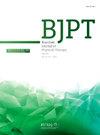股骨旋转截骨术对脑瘫患儿步态的影响:一项系统回顾和荟萃分析
IF 3.2
3区 医学
Q1 ORTHOPEDICS
引用次数: 0
摘要
背景:股骨旋转截骨术(FDRO)通常用于表现为步态紊乱的脑瘫儿童。然而,FDRO对步态功能和长期结果的影响尚不清楚。目的:本研究旨在量化和评价无相关髋关节病变的脑瘫患儿行FDRO步态改善手术后的步态变化,为这种侵入性手术的个性化决策提供支持。方法于2023年5月对6个数据库进行系统检索。在fdro前后提取动力学、运动学、时空参数和步态评分。进行随机效应荟萃分析。结果共分析46篇文献,1144例患者。骨盆旋转(平均变化:6.6°,95%可信区间[CI]: 2.2至11)、髋关节旋转(平均变化:14.4°,95% CI:16.7至-12.1)、足部进展角(平均变化:16.1°,95% CI:18.3至-14)和步态评分(标准化平均差[SMD]: 0.99, 95% CI: 0.52至1.47)均有显著改善。步态评分的估计改善与步态偏离指数在短期内增加10分和长期增加6.9分相对应。任何评估参数均未发现恶化。74%的患者术后1年矫正步态,69%的患者术后5年矫正步态。复发率为13%。结论虽然有证据表明,无髋关节病变的脑瘫患儿行股骨旋转截骨术可改善整体步态功能,但现有数据的质量较低。缺乏患者报告的结果,包括生活质量和满意度。不能确定确切的手术指征;需要考虑的因素包括股骨前倾、步态分析时的髋关节旋转、患者年龄和相关功能损伤。本文章由计算机程序翻译,如有差异,请以英文原文为准。
Impact of femoral derotation osteotomy on gait in ambulatory children with cerebral palsy: A systematic review and meta-analysis
Background
Femoral derotation osteotomies (FDRO) are commonly performed in children with cerebral palsy who present with intoeing gait. However, the impact of FDRO on gait function and long-term results remains unclear.
Objective
This study aimed to quantify and qualify gait changes following gait-improving surgeries involving FDRO in ambulatory children with cerebral palsy and no associated hip pathologies, to support individualized decision-making regarding this invasive procedure.
Methods
A systematic search was conducted in May 2023 across six databases. Kinetic, kinematic, temporospatial parameters, and gait scores were extracted pre- and post-FDRO. A random-effects meta-analysis was performed.
Results
Forty-six articles, including 1144 patients, were analyzed. Significant improvements were observed in pelvic rotation (mean change: 6.6°, 95 % confidence interval [CI]: 2.2 to 11), hip rotation (mean change:14.4°, 95 % CI:16.7 to –12.1), foot progression angle (mean change:16.1°, 95 % CI:18.3 to –14), and gait scores (standardized mean difference [SMD]: 0.99, 95 % CI: 0.52 to 1.47). The estimated improvement in gait scores corresponded to a 10-point increase in the Gait Deviation Index in the short term and 6.9 points in the long term. No deterioration was found in any assessed parameter. Intoeing gait was corrected in 74 % of patients at one year and in 69 % at five years postoperatively. The recurrence rate was 13 %.
Conclusion
While evidence suggests that femoral derotation osteotomies in ambulatory children with cerebral palsy without hip pathology improve overall gait function, the quality of available data is low. Patient-reported outcomes, including quality of life and satisfaction, are lacking. Definitive surgical indication could not be established; factors to consider include femoral anteversion, hip rotation at gait analysis, patient age, and relevant functional impairments.
求助全文
通过发布文献求助,成功后即可免费获取论文全文。
去求助
来源期刊
CiteScore
6.10
自引率
8.80%
发文量
53
审稿时长
74 days
期刊介绍:
The Brazilian Journal of Physical Therapy (BJPT) is the official publication of the Brazilian Society of Physical Therapy Research and Graduate Studies (ABRAPG-Ft). It publishes original research articles on topics related to the areas of physical therapy and rehabilitation sciences, including clinical, basic or applied studies on the assessment, prevention, and treatment of movement disorders.

 求助内容:
求助内容: 应助结果提醒方式:
应助结果提醒方式:


